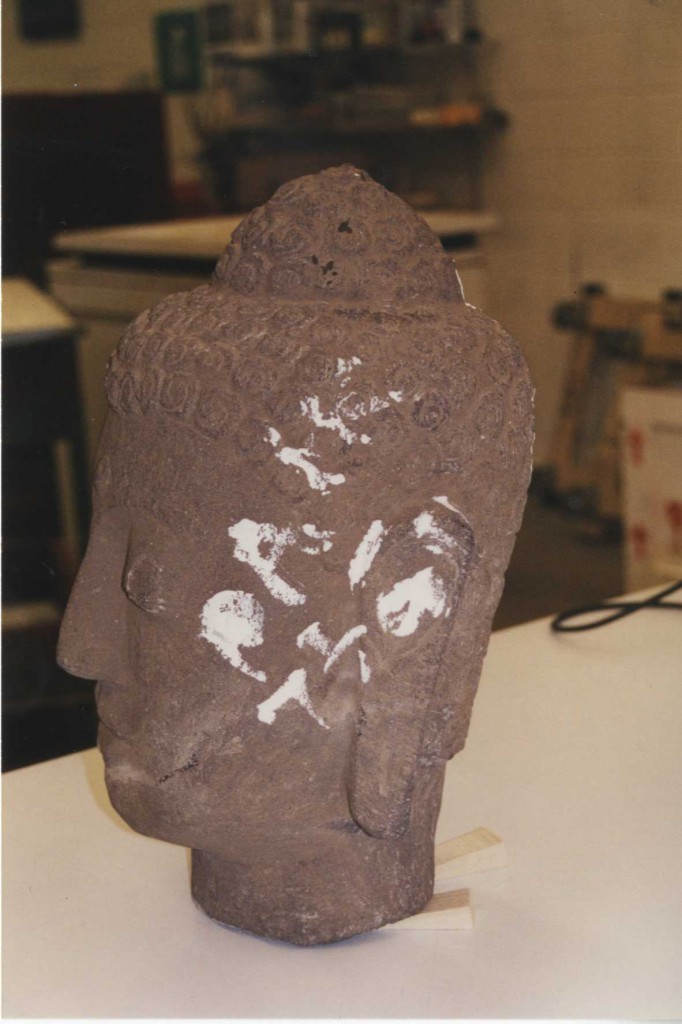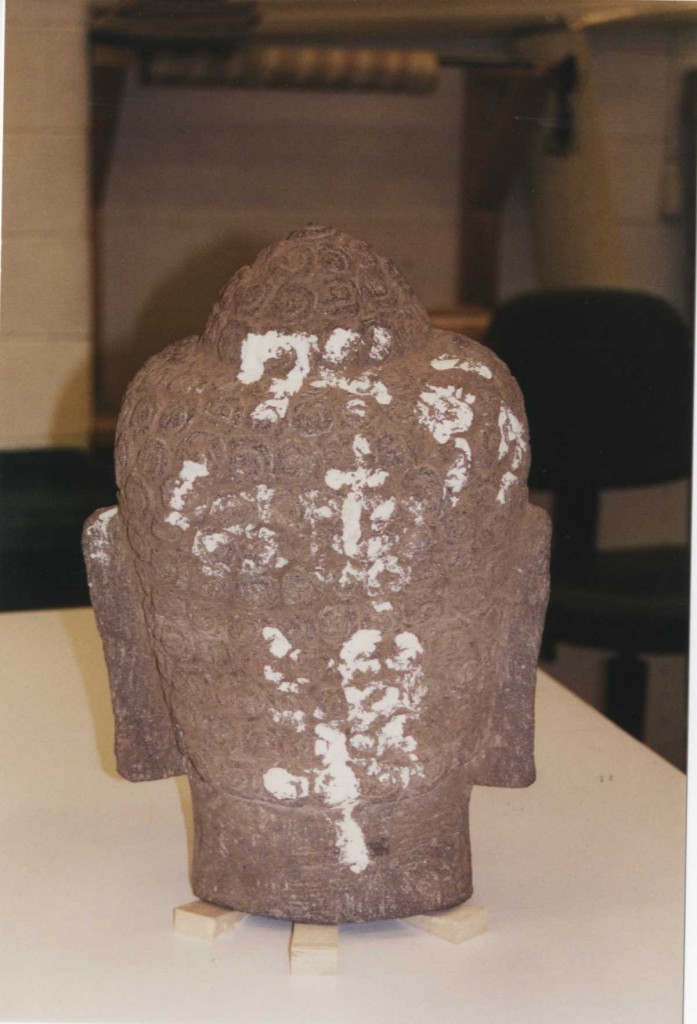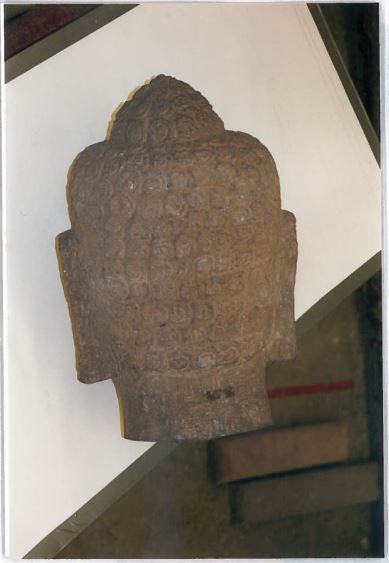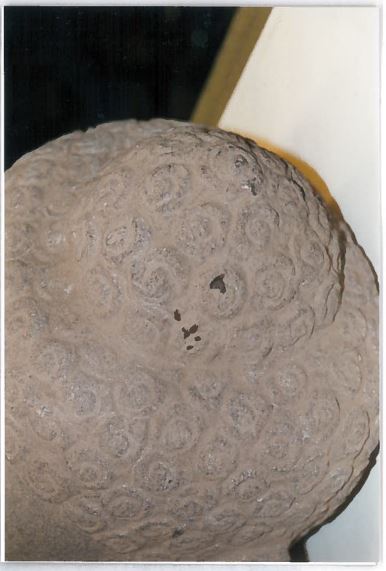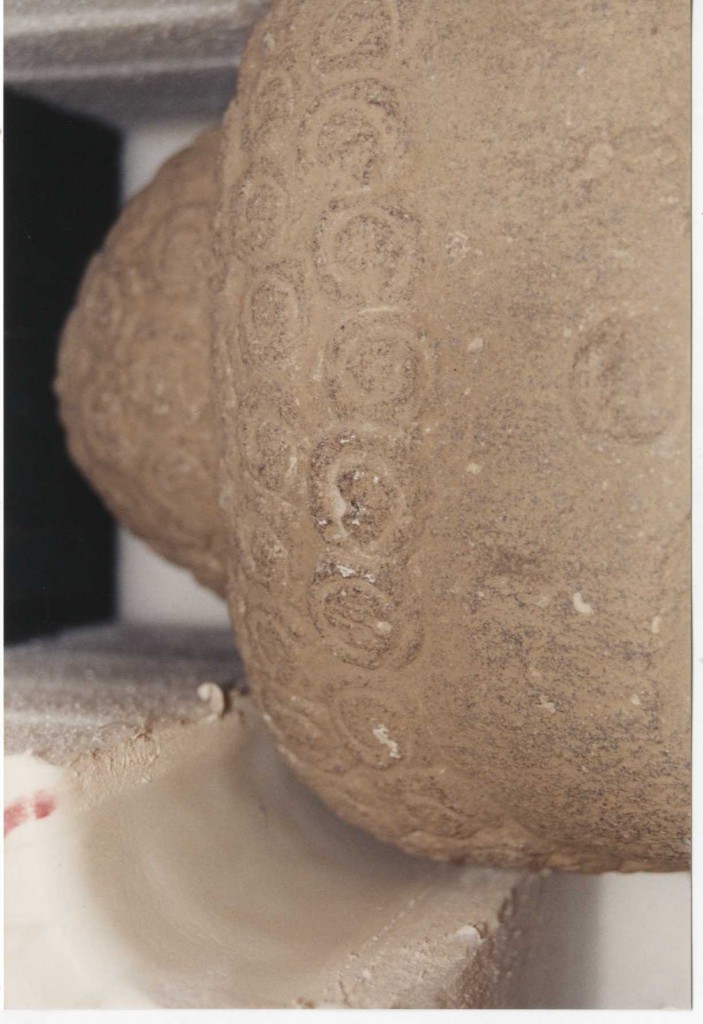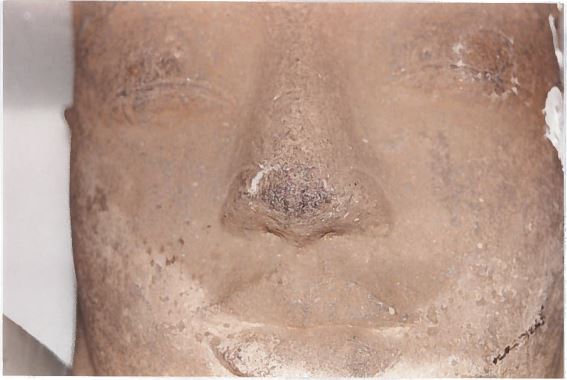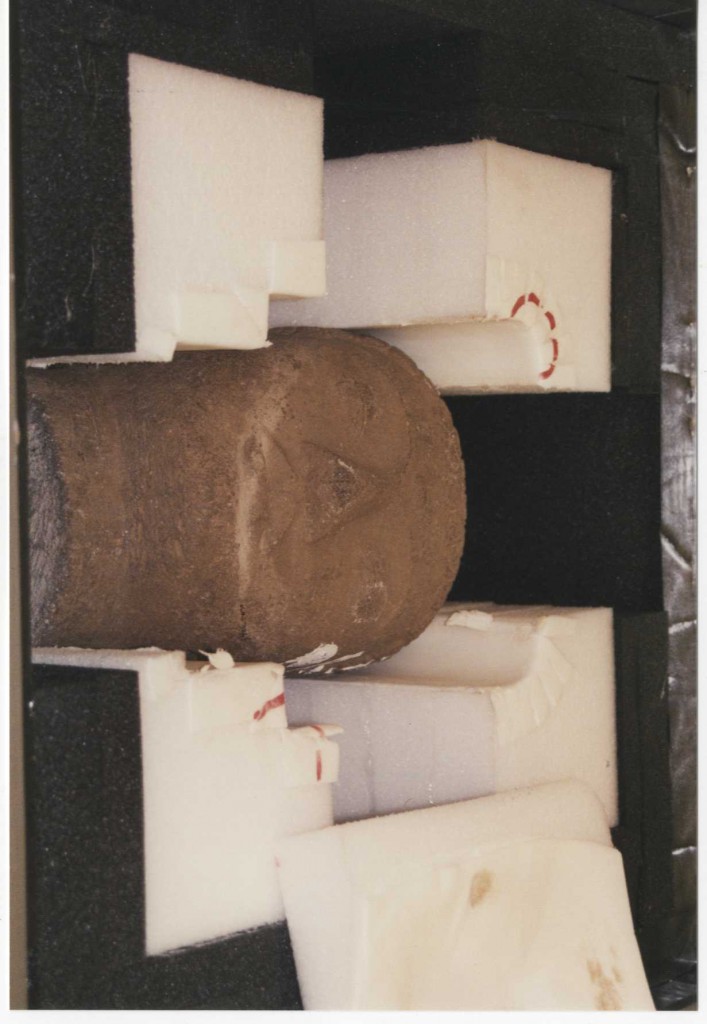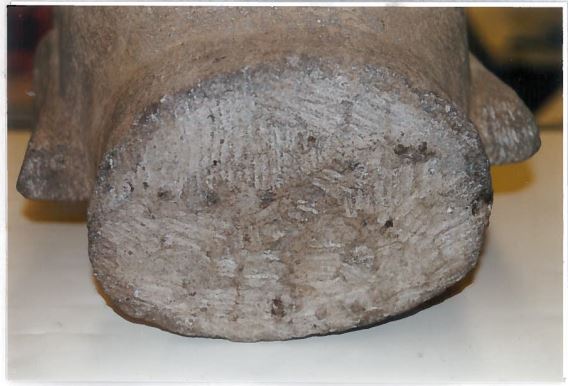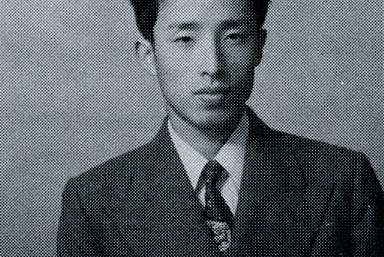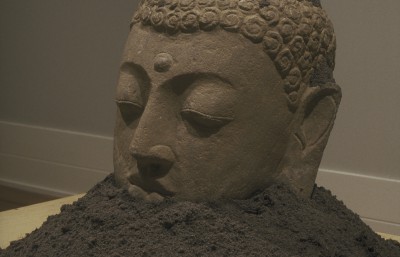Conservation History
During its trip around the country, the camera that records Buddha’s head was damaged. The camera’s power source shorted causing some of its buttons to melt. Unfortunately, treatment for electronic media can be trickier and less straightforward than that of traditional media. Various treatment plans were considered; it was decided that repairing the video camera was the best option. Since that incident, Buddha Watching TV has survived an earthquake and is still around to tell the tale.
Photos Taken by the Conservators
What Conservator Kathy Gillis has to Say
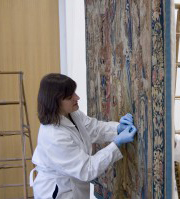
Depicted on the left is Kathy Gillis, the Senior Conservator of Sculpture and Decorative Arts here at the VMFA. She’s has been working here for over 40 years! In this photo she’s preparing a 16th century tapestry so that it may be displayed without hurting the piece. To better understand Buddha Watching TV’s conservation history, we sat down for an interview with Gillis, head conservator on the project.
Interviewer, Ellie Canning: What is your opinion regarding the conservation of electronic equipment used in this piece?
KG: My opinion is that the original electronic equipment should be preserved as much as possible. I’m learning, however, that with many contemporary artists, the physicality of the components of the artwork are less important to them that the idea it represents. It is ideal to discuss the future configurations with the artist, in the case we were unable to. The conservation of contemporary art needs to take into account what the artist projects the artwork will or should look like in the future.
EC: How often does the TV and camera need repair or replacement?
KG: In my experience, we have repaired the camera just once. We worked with the artist’s studio and actually had them do the repair.
EC: If the TV were to break, how would you go about finding a period authentic replica?
KG: Good question. Again, It would have been ideal to get the artist’s opinion on whether the “look” of the TV mattered, or if any TV would do, as the point is that Buddha is watching himself on TV, not necessarily that he’s watching himself on TV in the 1990s. In the case where an artist has died, we may be able to contact his studio of people that worked for him during the fabrication of the artwork. They might offer insight into what the artist would have liked. Before making any decision, I would consult with other conservation colleagues who deal with this issue on a regular basis. These would be people at New York’s Museum of Modern Art, San Francisco’s MOMA, and the Tate Gallery in London. They have more experience and I’d find out what they have done in similar situations. As with most original artworks, no two pieces are exactly the same and you may not do the same thing each time. My first inclination (and keep in mind, I’m “old school”) would be to try and keep the existing TV (since the artist picked it out of what were a number of options) and either repair it or create a digital image that could be projected on (or applied to) the existing screens so it LOOKS like it’s a live image, even though it isn’t. You might be able to find replacements on ebay or in thrift stores for old TVs, but eventually those are going to break, too. Conversations with the artist and asking these questions at the times you get the artwork are extremely important so you can do right by the artist’s intent when the artwork includes components that will break over time.
EC: Which component of the piece has been trickiest to maintain (Buddha, dirt, camera, or TV)?
KG: The dirt. People want to play with it; it’s really a problem. Balancing protecting the art and giving people access is an on-going issue in museums, especially with contemporary art. Of course you can argue that the dirt is not “chosen by the artist” just dirt we supplied and we do know in this case the artist just wanted dirt, he didn’t specify what kind or even amounts. However, having to keep up with disturbances in the dirt puts a strain on conservators wand we’d prefer to install a piece once and not have to keep cleaning up dirt spread around to other components of the piece where it isn’t meant to be.
EC: What do you feel is the best way to set up video art for success and longevity so future conservators may have less trouble?
KG: Have extensive conversations with the artist and record what is important to him/her. Ask him or her these questions. Conservators of contemporary art have a whole range of questions they ask of artists so they make sure they know what it is that is important to the artist to preserve for future generations.
